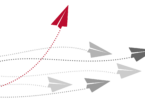ATHENS, Ga. – Epidemiologists have long known that when enough individuals in a population get sick and build immunity or die, the epidemic will end. A research team led by Pej Rohani, assistant professor of ecology at the University of Georgia, has developed a framework suggesting that some epidemics can be influenced not only by the dynamics of the susceptible population, but also by the effect of other pathogens in the environment.
The paper, “Ecological Interference Between Fatal Diseases,” will be published in the April 24 issue of Nature.
To explore the possibility that there is an interaction between pathogens, Rohani and his team analyzed and modeled historical records of measles and whooping cough infections in 32 European cities from 1883 to 1932, before vaccinations became widely available and when the diseases were significant killers in Europe. These diseases still remain a major cause of mortality in developing countries. Their work predicts that when one disease removes enough susceptible hosts from a given population, whether by convalescence or by death, the rate of infection for the “competing” disease also goes down. In practice, this means that when models of disease outbreaks for the two diseases are mapped simultaneously, given certain population demography, infections peak on an alternating two-year cycle.
“Certain biennial epidemics like measles and whooping cough outbreaks are negatively correlated – much more so than if their dynamics were independent,” said Rohani. “This ‘ecological interference’ is particularly strong when fatal infections permanently remove susceptible hosts.” The historical data are consistent with an interference effect between measles and whooping cough.
“This means that when sick people are home recuperating or when they are killed by an infection, they are not ‘available’ to other pathogens,” said Rohani. “The idea we have explored is that one pathogen can crowd the field for others.”
Rohani and his team focused on measles and whooping cough because good historical data was available and because these two diseases affect children in very similar age cohorts (with mean ages at infection of approximately 5 years). Additionally, because this is the age at which children typically begin school, the potential for interference is strengthened.
“This model could be significant in the analysis of multiple strain dynamics,” said Natalia Mantilla-Beniers, a UGA visiting scholar and co-author of the paper. “It is exciting to be able to show a relationship between the epidemiological aspects and the ecological aspects of disease transmission. A lot of work has been done on the diseases in isolation, but not too many people look at whether the diseases affect each other or how.”
To further test their hypothesis, Rohani’s team developed a three-strain extension of the model. They found the model again showed pronounced out-of-phase patterns as either the convalescence period or the fatality probability increases – patterns that are consistent with observations on the four serotypes of dengue fever or strains of echoviruses.
“Until now, it was thought the dynamics of dengue fever were largely determined by the number of mosquitoes available to transmit the disease or by some complex immunological interactions between the strains’ so-called antibody dependent enhancement,” said Rohani. “What we see now is that there may be something more complex at play. We see that one strain actually competes with the other for susceptible hosts.”
“This work shows that sometimes it might be impossible to understand epidemics by studying diseases in isolation,” said Mantilla-Beniers.
##







